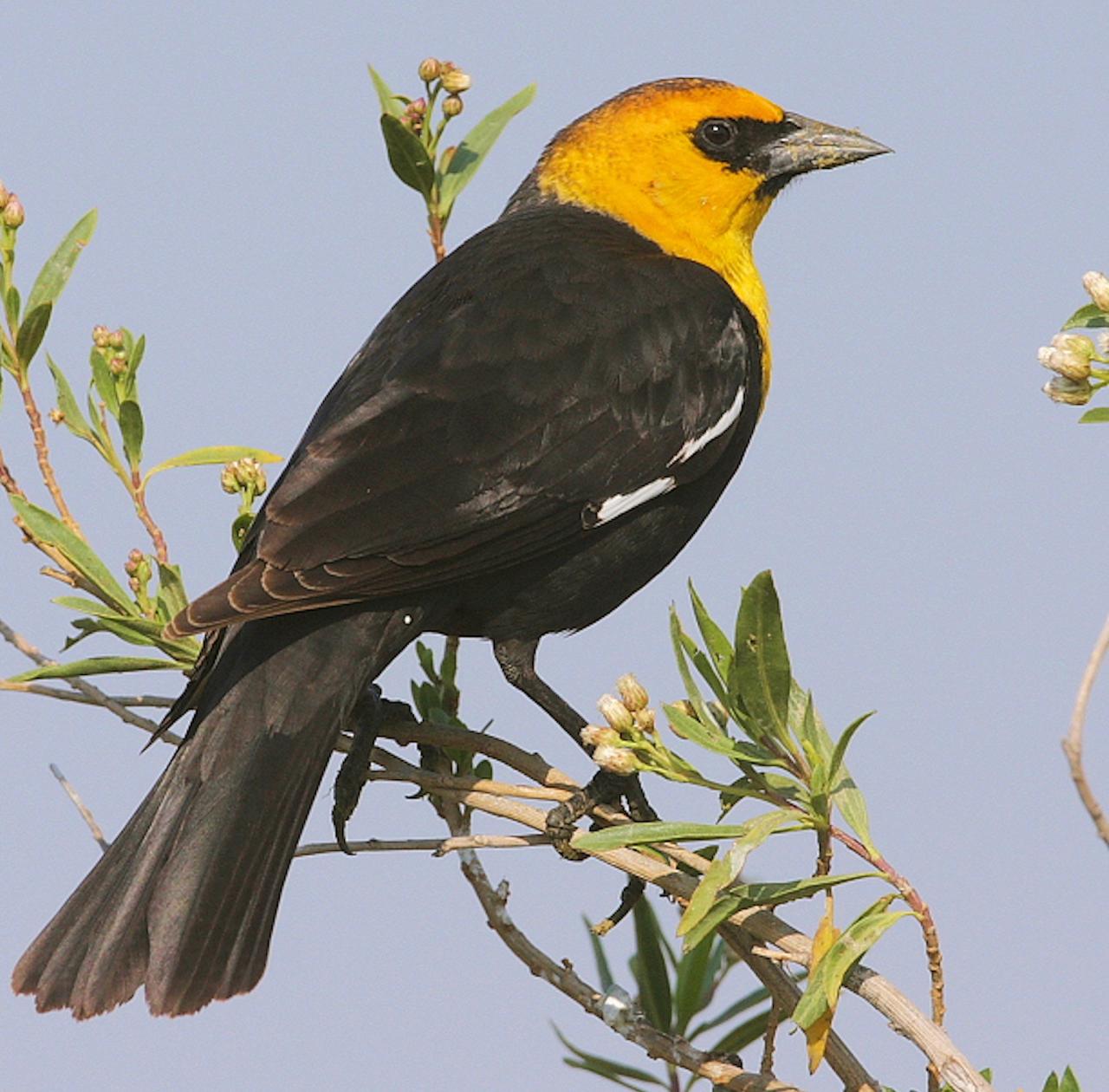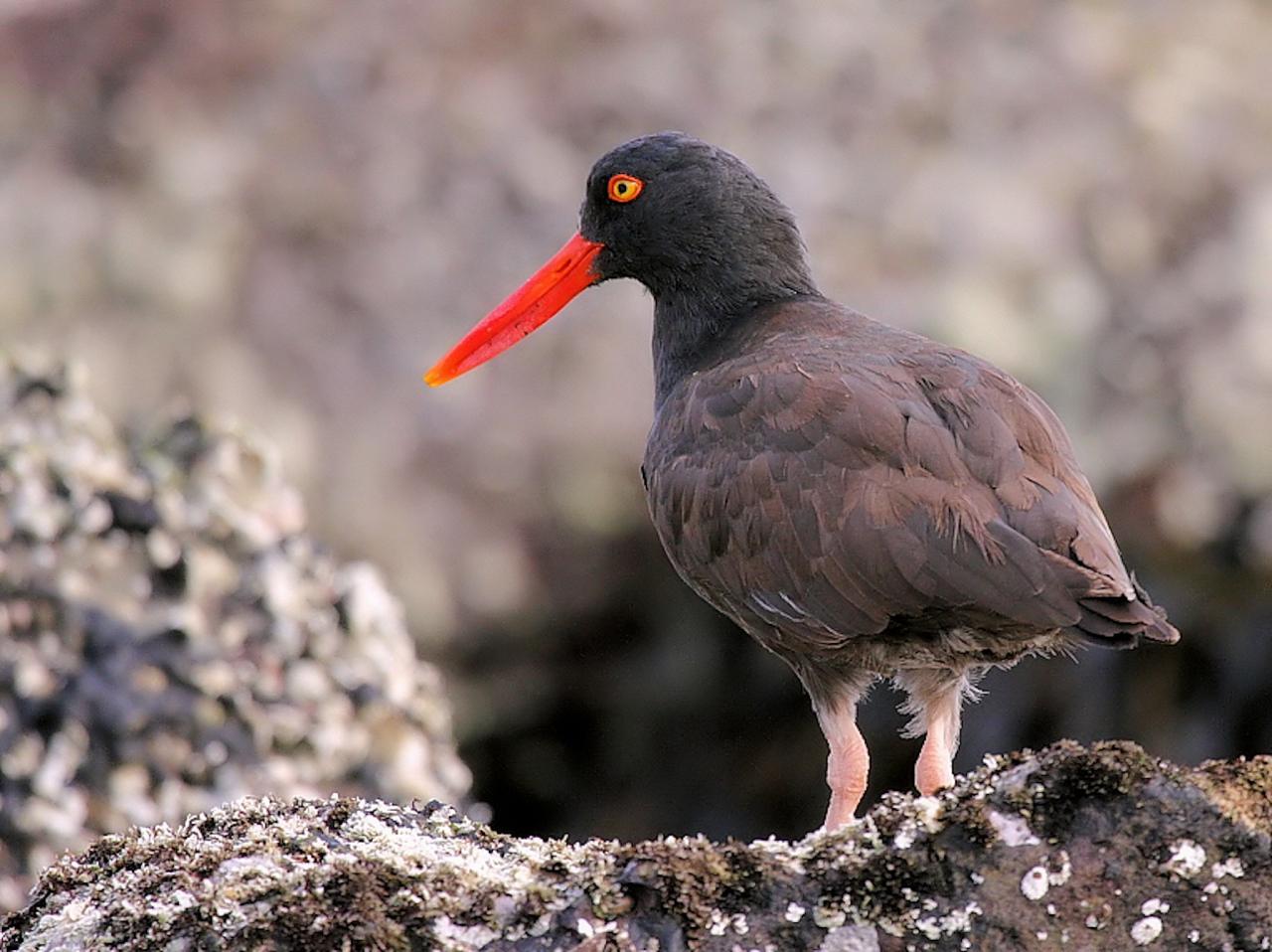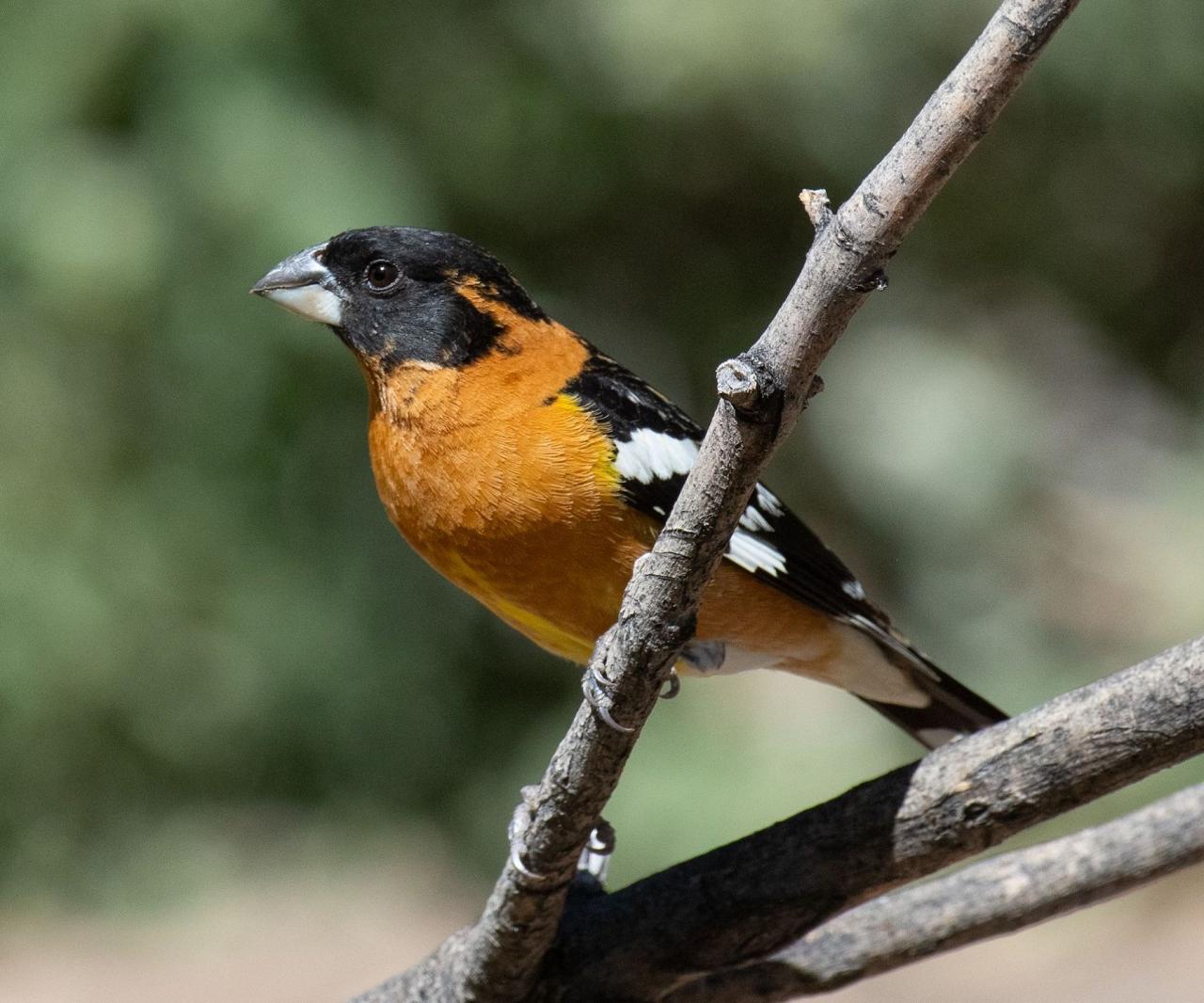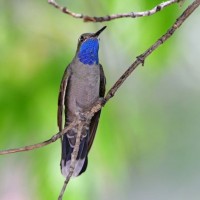- Overview
- Full Itinerary
- Photo Gallery
- Costing
- Travel Details
- Trip Reports
- Guides
- Map
- Know Before You Go
- Other Trips You May Like
When Steve Shunk, guide and author of the Peterson Reference Guide to Woodpeckers of North America, joined Naturalist Journeys, he brought expertise and familiarity with Oregon and the Pacific Northwest. Steve hails from the Bend/Sisters area and his signature woodpecker birding tour combines the best of Central Oregon with the spectacular Malheur region in Eastern Oregon. Here we combine the delights of Oregon’s Woodpecker Wonderland with Malheur’s high-desert oasis for a fabulous experience in the Wild West.
This Oregon birding tour combines some of central and eastern Oregon’s top birding hotspots. Experience some of the best bird diversity in North America, with over 200 breeding species. Expansive western scenery abounds.
This Oregon woodpecker birding tour starts and ends in Redmond, Oregon, from which we drive a short way to explore the northern side of Malheur National Wildlife Refuge and surroundings, with its vast wetlands and lakes. For millennia, migratory birds have fed and bred among the emergent wetlands and surrounding uplands of the Harney basin, and this ritual continues today. Many thousands of water birds, raptors, and songbirds return each year, along with thousands of birders, who visit to experience the natural spectacle occurring in this magnificent region. The birding highlights at Malheur are many, and we spend three full days exploring wetland, desert, grassland, canyon, and riparian habitats.
Traveling through the refuge’s top birding areas, we then spend two nights at the southern end of the Malheur Basin at Frenchglen, with great views of the rugged Steens Mountains. After time in rural enclaves, we then stay two nights in Bend and three nights in Sisters, two great small cities with western vibes—mountain vistas, pine forests, and the rivers running through town.
Each day of the tour we explore a broad diversity of habitats, from riparian woodland to wetlands and lakes to lush and in places, burned coniferous forests.
The first half of the tour is a waterfowl and wetland extravaganza. For the second half, our daily itinerary takes us in search of 11 nesting woodpecker species—incredible! Wander through recently burned forests in search of Three-toed and Black-backed Woodpeckers; enjoy mature cottonwood and aspen galleries in search of three different sapsuckers; and visit older burns and mature mixed-conifer forest for Lewis's and Pileated Woodpeckers, respectively. Each day, we encounter ponderosa pine forest, where we should find Williamson's Sapsucker and White-headed Woodpecker.

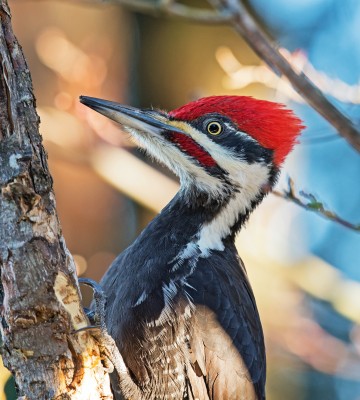


- "A naturalist’s bird journey through two environmentally and economically different areas of Oregon. With the vastness of the desert ( who knew Oregon had a desert) and the majestic mountains." — mark Rozycki, 2023 Traveler
- "This is simply a great field trip. Steve Shunk is a great leader. He goes to great effort to make sure everyone sees their "target" birds. He always makes sure that everyone sees a particular bird. On top of everything else, he is a lot of fun." — 2023 Traveler
Tour Highlights
- Travel with experts—our guide is author of the Peterson Reference Guide to Woodpeckers of North America. He calls our route Woodpecker Wonderland and you can expect to find 11 nesting woodpecker species!
- Catch migration and arrival for resident species as spring arrives to this wetland and mountain landscape
- Hear the rancorous calls of Yellow-headed Blackbird; watch for marshes teaming with waterfowl
- Find five species of grebes and 10 species of western raptors
- Experience the rural west, its cowboy culture and wide-open spaces are home to rich wildlife
- Listen to quaking aspen trees trembling in the breeze while looking at the day-glow colors of Lazuli Bunting and Western Tanager
- Watch Vaux’s Swift acrobatic in the sky against backdrop views of the snow-clad Cascades
- See Osprey harass Bald Eagle carrying fish over scenic mountain lakes with Bufflehead and Barrow’s Goldeneye down below
- Learn how fire ecology has made a mosaic of habitat prime for birds across varied habitats
- In Bend, end great days of birding with top-rated local foods and a fabulous selection of brews and wine from the region

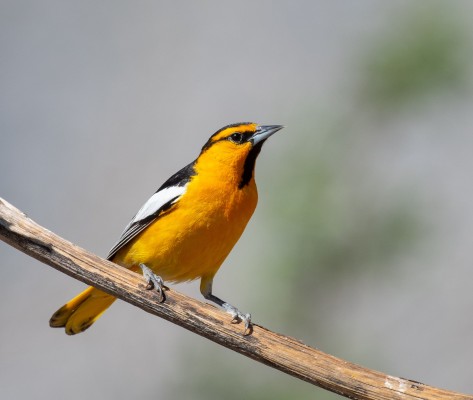
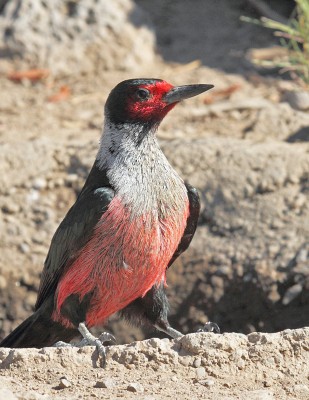

Trip Itinerary
Itineraries are guidelines; variations in itinerary may occur to account for weather, road conditions, closures, etc. and to maximize your experience.
Mon., May 18 Arrive in Redmond, Oregon | Drive to Hines, Gateway to Malheur Country
Please plan to arrive at the Redmond Municipal Airport (RDM), servicing Deschutes County, by 2:00 PM. We have a 2.5-hour drive to Hines. After a brief birding stop along the way, settle into your accommodations and meet up for an early dinner and possibly some evening birding in the Silvies River flood plain. This is our first introduction to the diverse habitats of the Harney Basin.
Accommodations at the Best Western Rory and Ryan Inn, Hines (D)
Tues., May 19 Silvies River Floodplain | Malheur Lakes
On our first full day, we have much to explore. We spend the morning crisscrossing the wetlands of the Silvies River floodplain. Sometimes referred to as the Malheur-Harney Lakes Basin, this closed sub-basin is named for Harney Lake, an alkali sink in this northwest corner of the immense Great Basin. The Silvies River drains from the southern limits of the Oregon’s Blue Mountains and across its expansive flood plain, with its delta feeding into the north shore of Malheur Lake.
Each spring, regional water managers direct the flow of the Silvies through a complex network of canals and ditches to flood irrigate the private agricultural lands between the Blue Mountain foothills and Malheur Lake. Flood irrigation in the Silvies flood plain more-or-less emulates the “natural” flooding that once occurred before immigrants settled the region.
South of the Silvies flood plain, three lakes—Malheur, Mud, and Harney—form the top of a lopsided T that defines the northern limits of Malheur National Wildlife Refuge. After lunch at The Narrows, we skirt the southern shore of Malheur Lake, the largest of the three, en route to Malheur Refuge Headquarters. With its giant cottonwood trees and a productive spring-fed pond, Refuge HQ lets us experience a very busy songbird migration. This desert oasis attracts an amazing array of migrants, including flycatchers, vireos, tanagers, and warblers. We could encounter flocks of Western Tanager joined by any of 10 likely warblers—out of 20 possible warbler species! Black-headed Grosbeak and Lazuli Bunting frequent the feeders at the visitor center, with hummingbird feeders hosting up to four different hummer species.
Accommodations at the Best Western Rory and Ryan Inn, Hines (D)
Wed., May 20 & Thurs., May 21 Malheur Refuge | Blitzen River Valley
After two nights in town, we head south into the Blitzen River Valley. The Blitzen River forms the stem of the Malheur Refuge T, flooding a lush network of wetlands that stretches 35 miles from the delta at the southern shore of Malheur Lake to the mouth of the Blitzen Canyon. The primary source of the Blitzen River is the snowmelt from Steens Mountain, a 35-mile-long fault block that rises from the valley floor—at 4,000 feet elevation—to its summit at nearly 10,000 feet. The Blitzen delivers the vast majority of the water that feeds the 140,000-acre Malheur Refuge.
Over two full days, we visit such Malheur hotspots as Buena Vista Ponds, Benson Pond, and the deep-water Krumbo Reservoir, as well as Page Springs and the wild and scenic Blitzen River. From our base in the quaint and historic hamlet of Frenchglen, we explore the Blitzen Valley and surrounding uplands, searching for over 150 breeding species, including: five different grebes; over 15 nesting waterfowl species; 10 species each of raptors, shorebirds, and sparrows; and up to eight different flycatcher and six swallow species. Yellow-headed Blackbird are abundant in the marshes, with Willets and Wilson’s Snipe scattered among them. Thousands of Franklin’s Gulls and White-faced Ibis breed on the refuge, along with over 100 pairs of Sandhill Crane. Additional breeding bird highlights include rare Oregon nesters such as Trumpeter Swan, Eastern Kingbird, Bobolink, and Yellow-breasted Chat.
Malheur offers many other highlights, including iconic herds of wild horses; nearly 60 species of wild mammals on the refuge alone; carpets of desert wildflowers; a dynamic cultural history, from the first Paiute residents to the later cattle barons, as well as stories from the recent occupation of Malheur Refuge.
Accommodations at the Drover’s Inn & Frenchglen Hotel, Frenchglen (B,L,D, both days)
Fri., May 22 Malheur to Bend
The Malheur region provides us with an amazing experience, but our adventure has just begun! After a final morning of birding around Frenchglen, we head west to downtown Bend—ready to explore the Cascade Mountains. We arrive in Bend in time for lunch, followed by afternoon birding at Shevlin Park. This amazing city park along Tumalo Creek supports old-growth conifers and productive aspen galleries. The aspens alone can host up to six nesting woodpecker species, including multiple pairs of Lewis’s Woodpecker.
Best Western Ponderosa Lodge, Sisters (B,L,D)
Sat., May 23 Birding Bend & The Cascades Lakes
Our first full day in Central Oregon begins along the upper reaches of Tumalo Creek, with mixed-conifer forest and breeding birds such as Williamson’s Sapsucker, Canada Jay, MacGillivray’s Warbler, and Evening Grosbeak. The balance of the day is spent in the high Cascades lakes region. We focus on two special lakes—Sparks and Hosmer—in search of specialty breeding birds of the mountains.
Sparks Lake typically hosts Barrow’s Goldeneye and Hooded Merganser, with Pine Siskin and Red Crossbill in the uplands and Mountain Bluebird and Sandhill Crane in the surrounding meadows. Hosmer gives us our first chance for American Three-toed Woodpecker, plus shallow waters with Ring-necked Duck, Pied-billed Grebe, and Bufflehead. The drive around these lakes has its own allure, with spectacular views of the Three Sisters mountains, plus Broken Top and Bachelor Butte, a volcanic landscape that is second to none.
Accommodations at the Best Western Ponderosa Lodge, Sisters (B,L,D)
Sun., May 24 – Tues., May 26 Birding Woodpecker Wonderland!
We leave Bend early and head northwest to the Sisters area, our gateway and base for exploring Central Oregon’s Woodpecker Wonderland, where 11 woodpecker species raise their young each year. Woodpecker searching gives us the framework for our days, but the diverse habitats in the region expose us to a correspondingly diverse array of breeding species and late migrants. The eastern slope of the Cascades is characterized by stratified montane habitats that range from juniper woodlands to alpine tundra. Several factors contribute to this diversity phenomenon:
• The annual rainfall gradient from the Cascades crest to the Ponderosa Pine forest ranges from 120 inches to 10 inches in as few as 10 miles; this is “rain equivalent,” as most precipitation falls as snow. This horizontal gradient results in narrow bands of habitat, each of which is adapted to a different amount of precipitation.
• Several significant streams and two rivers flow from the eastern slope, supporting riparian habitats characterized by aspen, willow, alder, and other streamside vegetation.
• “Natural” fire regimes in the region vary by elevation and habitat type, with more frequent, less intense fires typical at lower elevation pine forests and high-intensity, infrequent fires at higher-elevation mixed-conifer forests.
• All fires burn in a mosaic of intensities, with patches of high-intensity, mixed intensity, and low intensity fire interspersed throughout a given fire perimeter.
These factors combine to support nearly 150 species of breeding birds. Lakes in the region host nesting Hooded and Common Mergansers, as well as Bufflehead and Barrow's Goldeneye. Osprey and Bald Eagle occur along the shorelines, with Spotted Sandpiper just arriving on breeding territories. This is an excellent time of year for hummingbirds, with resident Anna's being met by migrant—and locally nesting—Rufous and Calliope. We find excellent study opportunities for Empidonax flycatchers, with Hammond's, Gray, Dusky, Willow, and Pacific-slope all on territories by mid-May. We also stay alert for any of the eight local Corvid species, including Gray Jay, Pinyon Jay, and Clark's Nutcracker.
Each of the habitats we visit brings us a new array of songbirds. Cassin's Vireo, Cassin's Finch, and Pygmy Nuthatch are most common in ponderosa pine forest; mixed-conifer forest supports Hermit Thrush, Hermit Warbler, and Evening Grosbeak; and shrubby slopes are loaded with Fox Sparrow and Green-tailed Towhee, with plenty of Lazuli Bunting and Nashville Warbler, too. Across the region, we see Western Tanager and Black-headed Grosbeak. Red Crossbill are a regular distraction flying above the forest canopy, while Vaux's Swift occasionally twitter overhead. Wherever we go, throughout these days, we can count on great birding and the amazing scenery of the Oregon Cascades.
Meals are a combination of favorite local restaurants and some picnic lunches.
Accommodations at the Best Western Ponderosa Lodge, Sisters (B,L,D)
Wed., May 27 Morning Birding | Departures from Redmond
On our final day in central Oregon, we enjoy some casual birding before heading to Redmond Municipal Airport. We return you to the Redmond Municipal Airport in time for your scheduled departures. (B)
NOTE: Our local woodpecker festival is scheduled for the second weekend after our tour, and you may wish to stay in the area an extra week to attend the event and explore the region more. This festival offers a great chance to spend time in the field with some of our best local guides, as well as birders from all over the country. If you wish to attend the festival, note that the event is very popular. In order to get onto any field trips, you should closely follow the East Cascades Audubon website—or subscribe to the local listserve, COBOL—and enroll immediately upon the start of registration. Contact us for further details.
Cost of the Journey
Cost of the Journey is $4490 DBL / $5470 SGL, based on double occupancy, per person. The tour price includes airport transfers, 9 nights’ accommodations, all meals as noted in the itinerary, professional guide services, park and preserve entrance fees, and miscellaneous program expenses.
Cost of the journey does not include airfare from your home to Redmond, Oregon or items of a personal nature, such as drinks from the bar, telephone, and local guide gratuities (at your discretion, we will give some guidelines).
Travel Details
Please plan to make air travel plans only after the minimum group size has been met. We will send you a confirmation email as soon as the trip has been confirmed.
Arrival and Departure Airport: Redmond Municipal Airport (RDM)
Arrival Details: Plan flights to arrive May 18, 2026, no later than 2:00 PM
Departure Details: Plan flights to depart May 27, 2026, after 1:00 PM
Travel Tips: If you want to arrive early and rest up from your travels, we recommend the Comfort Suites Redmond Airport. You can book this online or call (541) 504-8900 to make a reservation. The hotel offers free airport transportation, and they are within walking distance to a couple of restaurants.
The Dean Hale Woodpecker Festival is scheduled for late May and you may wish to stay longer to attend the festival and explore the area more. This festival offers a great chance to spend time in the field with local guides, as well as birders from all over the country. If you wish to attend the festival, note that the event is very popular. To get into any field trips, you should closely follow festival website.
Items of Note
We travel in a large passenger van with comfortable seating for up to seven birders and our guide, so everyone will have a window seat. This is an active birding tour, typically we travel by vehicle from site to site, and each day will involve considerable walking. We may hike up to three or four miles per day, with mostly short walks at a ‘birdwatcher's pace’ but a few routes may take us up short, steep trails or over rough terrain.
As with all Naturalist Journeys tours, Steve will offer great birding in the context of a broad natural history experience, we take plenty of time to ‘smell the flowers’—and touch the lava rocks, wet our hands in fresh springs, enjoy the antics of chipmunks, etc. We review our birds and other wildlife sightings at dinner each evening, but we will also discuss the broader discoveries of the day. We hope to send you home understanding of Oregon and the Pacific Northwest’s ecology and current conservation issues.
Browse below for trip reports and species lists from past versions of this and other tours from this destination.
Oregon
- May 2021
- July 2021 (Birds & Botany)
- July 2021
- May 2022
- July 2022
- May 2023
- June 2023 (Photography Seminar)
- July 2023 (Cascade Mountain Lodges)
- May 2024
- May 2025
-
Steve Shunk

Steve Shunk started birding in the San Francisco Bay Area in 1989, and he moved to central Oregon’s ‘Woodpecker Wonderland’ in 1997, where 11 woodpecker species breed annually. This phenomenon led to a 20-year obsession studying this charismatic family of birds. Steve founded the region’s woodpecker festival in 2008, and his Peterson Reference Guide to Woodpeckers of North America was published in 2016. He has fed leeches (his own blood) in Malaysian Borneo, and he has watched Spotless Starlings swarming around the Greek ruins of Sicily. Steve’s Alaska adventures have taken him from Ketchikan to Barrow and St. Paul Island. One of his favorite destinations takes him to see ‘eastern’ warblers breeding across the boreal forest of Alberta, but recent adventures have led him to favor the cushion plants and condors of the Peruvian high Andes. Steve speaks at bird festivals across North America, and he returns annually to speak and guide at the Vallarta Bird Festival in far-western Jalisco, Mexico. Steve joined Naturalist Journeys earlier this year, and we are excited to have him on the schedule for 2021 and beyond.
Steve’s work as a field biologist has taken him from the Coast Range of Oregon to California’s Sierra Nevada. Most recently, he conducted point-count and woodpecker surveys for a study in the Central Oregon Cascades. Steve co-founded the East Cascades Bird Conservancy (now East Cascades Audubon), and served as its first president. He also co-founded the Oregon Birding Trails Program and coordinated its flagship project, the Oregon Cascades Birding Trail. When Steve is not traveling the world for tours and lectures, he can be found writing, skiing, hiking, and watching woodpeckers at home in lovely Sisters, Oregon.Other trips with Steve Shunk
-
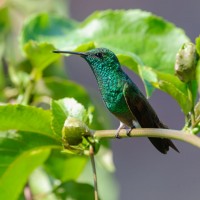 New Year at Rancho Primavera A Pacific Mexico Winter Escape - FULL - see our Belize Christmas tour!December 27, 2025 - January 2, 2026
New Year at Rancho Primavera A Pacific Mexico Winter Escape - FULL - see our Belize Christmas tour!December 27, 2025 - January 2, 2026 -
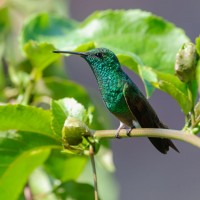 Pacific Mexico & Rancho Primavera: A Winter Escape! With Southeast Arizona Bird Observatory - FULL!January 21 - 28, 2026
Pacific Mexico & Rancho Primavera: A Winter Escape! With Southeast Arizona Bird Observatory - FULL!January 21 - 28, 2026 -
 Pacific Mexico & Rancho Primavera FULL - See our April departure!February 15 - 21, 2026
Pacific Mexico & Rancho Primavera FULL - See our April departure!February 15 - 21, 2026 -
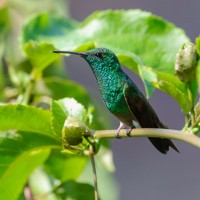 Pacific Mexico & Rancho Primavera FULL - See our April departure!March 8 - 14, 2026
Pacific Mexico & Rancho Primavera FULL - See our April departure!March 8 - 14, 2026 -
 Pacific Mexico & Rancho Primavera April 14 - 20, 2026
Pacific Mexico & Rancho Primavera April 14 - 20, 2026 -
 Texas Coast & Big Thicket A Legacy Club Journey for The Nature ConservancyApril 22 - 27, 2026
Texas Coast & Big Thicket A Legacy Club Journey for The Nature ConservancyApril 22 - 27, 2026 -
 Wild Borneo: Endemic Birding & NatureSeptember 30 - October 14, 2026
Wild Borneo: Endemic Birding & NatureSeptember 30 - October 14, 2026 -
 Pacific Mexico & Rancho Primavera Thanksgiving in Mexico!November 24 - 30, 2026
Pacific Mexico & Rancho Primavera Thanksgiving in Mexico!November 24 - 30, 2026
-
-
Dave Mehlman

Dave is a naturalist with interests in birds, migration, ecosystems and natural disturbances, plants, and gardening. He holds a PhD from the University of New Mexico. Dave worked for The Nature Conservancy for 25+ years as Director of its Migratory Bird Program. He has researched in Latin American and the Caribbean. An avid birder, Dave enjoys teaching about natural habitats and local cultures. He has published papers in scientific and popular journals.
Other trips with Dave Mehlman
-
 Birds & Nature of New Zealand FULL - Check out Island of Wonder: Birds & Nature of Sri Lanka!January 7 - 23, 2026
Birds & Nature of New Zealand FULL - Check out Island of Wonder: Birds & Nature of Sri Lanka!January 7 - 23, 2026 -
 Southern California: Spring Coastal BirdingFebruary 16 - 23, 2026
Southern California: Spring Coastal BirdingFebruary 16 - 23, 2026 -
 South Texas Birding & NatureMarch 11 - 19, 2026
South Texas Birding & NatureMarch 11 - 19, 2026 -
 Texas Coast & Big Thicket A Legacy Club Journey for The Nature ConservancyApril 22 - 27, 2026
Texas Coast & Big Thicket A Legacy Club Journey for The Nature ConservancyApril 22 - 27, 2026 -
 Arizona Monsoon Madness: Birding & Nature in a Season of Wonder!August 10 - 17, 2026
Arizona Monsoon Madness: Birding & Nature in a Season of Wonder!August 10 - 17, 2026 -
 Yellowstone in The FallSeptember 19 - 25, 2026
Yellowstone in The FallSeptember 19 - 25, 2026 -
 Western Panama: Tranquilo BayOctober 11 - 18, 2026, w/Mt. Totumas extension
Western Panama: Tranquilo BayOctober 11 - 18, 2026, w/Mt. Totumas extension -
 Thanksgiving in Trinidad & TobagoNovember 22 - December 1, 2026
Thanksgiving in Trinidad & TobagoNovember 22 - December 1, 2026
-
Essential Information +
Packing List +
Suggested Reading List +
Useful Links +
Photo credits: Banner: Lazuli Bunting, Sandy Sorkin; Old St. Francis School Hotel, courtesy of McMenamins; Pileated Woodpecker, by Bill Pennell on Unsplash; California Scrub Jay, Greg Smith; White-headed Woodpecker, Steve Wolfe; Bald Eagle, Greg Smith; Bullock's Oriole, Homer Gardin; Lewis's Woodpecker, Steve Wolfe; Old St. Francis School Hotel, courtesy of McMenamins; Yellow-headed Blackbird, Doug Greenberg; Malheur NWR, Steve Wolfe; Western Tanager, Barb Stone; Williamson's Sapsucker, Steve Shunk; Lewis's Woodpecker, Steve Shunk; Flowers, Steve Shunk; Osprey, Sandy Sorkin; Pileated Woodpecker, Sandy Sorkin; Yellow-headed Blackbird, Naturalist Journeys Stock; Band-tailed Pigeon, Greg Smith; Black Oystercatcher, Steve Wolfe; Black-headed Grosbeak, Homer Gardin; Calliope Hummingbird, Naturalist Journeys Stock; Common Nighthawk, Naturalist Journeys Stock; Gray-crowned Rosy-Finch, ALAN SCHMIERER public domain via Flickr.





